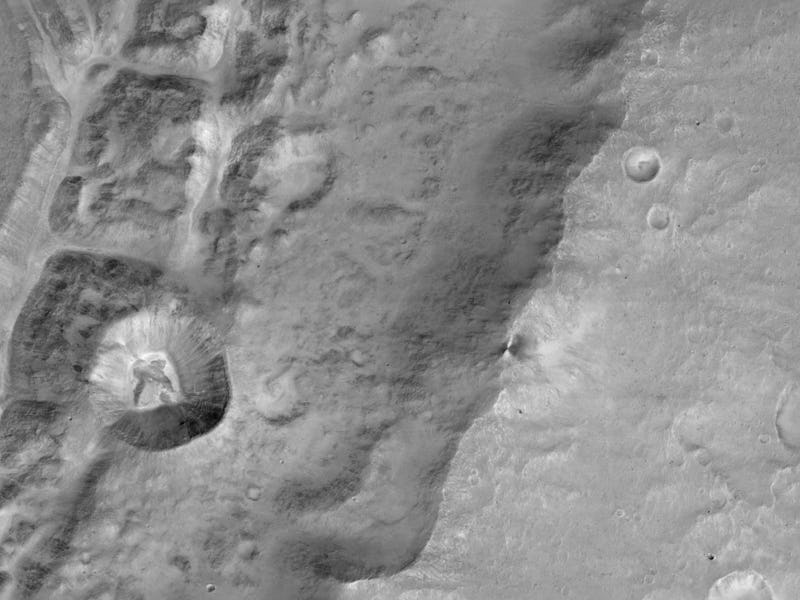Although ESA and Russia ran into an explosive hiccup that resulted in the destruction of the ExoMars Schiaparelli lander, the other half the collaborative Mars research mission between the two parties — the Trace Gas Orbiter — is doing well! In fact, ESA just released the first set of images collected by TGO since its insertion into the Martian orbit last month. The pictures highlight the orbiter’s potential to snap up killer pics of the Red Planet from above, but they also glimpse at the ability of TGO to accomplish its primary objective: detect biosignatures in the atmosphere that could be signs of past or present life on Mars.
TGO is tasked specifically with measuring amounts of nitrogen dioxide, water vapor, acetylene, and methane. It’s the latter thats most compelling for scientists. Methane, even trace amounts, could be a clear sign of biological activity on the surface of the planet.
After many weeks of calibrating its instruments, TGO is finally ready to collect some of that sweet, sweet data. While many of us were chowing down on Turkey and stuffing over Thanksgiving, TGO was hanging 146 miles above the solar system’s favorite desolate wasteland and getting an aerial view of Mars. The orbiter snagged its first measurements of the atmosphere’s carbon dioxide concentrations, and also managed to reconstruct a 3D view of the surface feature known as Noctis Labyrinthus.
The first stereo reconstruction by the Trace Gas Orbiter of a small area in a region called Noctis Labyrinthus
Some of these pictures are closer than what TGO will be set to gather in the near future. The optimal orbit ESA’s scientists have in mind for the orbiter is 250 miles in altitude, so it’s likely these could be some of the closest shots TGO will get during its mission. Enjoy them while they’re here!
